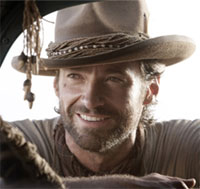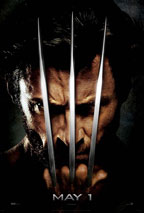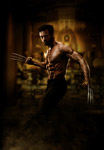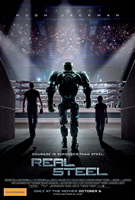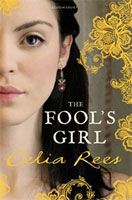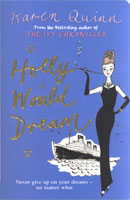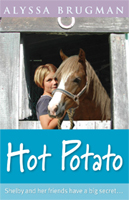Angelina Jolie Maleficent
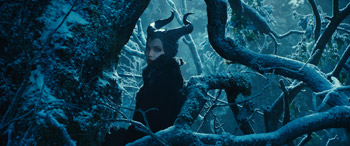
Angelina Jolie Maleficent
Cast: Angelina Jolie, Elle Fanning, Sharlto Copley
Director: Robert Stromberg
Genre: Adventure, Fantasy, Drama
Rated: PG
Running Time: 134 minutes
Synopsis: The "Sleeping Beauty" tale is told from the perspective of the villainous Maleficent and looks at the events that hardened her heart and drove her to curse young Princess Aurora.
Maleficent
Release Date: May 29th, 201
About the Production
The character Maleficent was a Disney creation first introduced in their 1959 animated feature 'Sleeping Beauty." But the story of the princess who falls under a spell of eternal sleep has been told since the beginning of fairy-tale time.
The story of Sleeping Beauty evolved"under different titles"over approximately 400 years (1000 if we count some overlapping elements from Medieval times). The early written origins of the story can be traced from the French novel 'Perceforest" (author unknown) written in 1527 to a tale by Italian storyteller Giambattista Basile (1636) called 'Sun, Moon & Talia" from a collection entitled 'The Tale of Tales," which is generally accepted as the first collection of fairy tales ever printed.
In 1697, a version of the story called 'The Beauty Asleep in the Woods" was published by Charles Perrault in his book, 'The Tales of Mother Goose." The Brothers Grimm borrowed heavily from this version in writing their own 1812 story of a beautiful princess awakened from a spell-induced slumber, 'Little Briar Rose."
The spinning wheel is the only consistent plot point in all the versions of the story from the earliest to the latest. Spinning needles or splinters of spun flax have caused deep sleep for all the princesses in the legacy of Sleeping Beauty.
The origins of Maleficent as a female personification of evil are less clear. Basile's story casts a queen as the jealous, vengeful villainess but she was married to the king and not an independent outsider who inflicts a curse on the royal family. Perrault changed the villainess to a wicked fairy and also introduced the element of a handsome Prince whose kiss could break the spell. His version is the closest to Disney's interpretation.
So it fell to 20th-century writers and animators and actress Eleanor Audley to invent Maleficent for Disney's classic 'Sleeping Beauty." The film took 10 years to make and cost $6 million. It was the most expensive movie the studio had produced to that point in time.
Maleficent remains both the favorite and the most feared character in Disney's gallery of infamy.
The Director and His Vision
To find the perfect director to bring the production to life, Joe Roth reached out to Robert Stromberg. 'A film like this generally takes about six or seven months to prepare correctly because it's a giant visual production," informs Joe Roth. 'So, I had been working with Rob Stromberg, who won the Oscar® for -Avatar' as production designer, and won the Oscar® for -Alice in Wonderland' as designer as well, and had just finished -Oz The Great and Powerful' for me. It was very clear to me that he was born to be a director, and he really wanted to be a director."
'When Disney came to me with this project, I'd already done several big visual types of movies and I'd learned that audiences make decisions about going to movies long before they know what the movie's about," continues Joe Roth. 'They get a vibe off some visual presentation that happens earlier than anything else. So, I thought, Angelina's an experienced actress, Robert Stromberg is going to be a great director and if he can provide the distinct visual style he brought to -Avatar,' -Alice in Wonderland' and -Oz The Great and Powerful,' I think it's a good marriage."
Bringing Maleficent to the screen as a live action character is a responsibility that Joe Roth took very seriously when choosing his director. 'Maleficent is a really important character; a character that if we do our job right in the film, that not only her character but Sleeping Beauty's character as well, and some of the fairies and great creatures that Rob Stromberg has created will be seen for years and years and years in parks and in stores. Maleficent is a very, very important character in the Disney life."
Robert Stromberg was undaunted by the challenges of a big name actress and a big budget in his directorial debut. 'I started as an artist"from doing pencil drawings as a kid to doing matte paintings to art directing and production designing," says the director. 'I think as an artist you're always looking for the biggest canvas you can find and this was yet another big canvas to conquer. I thought it was intriguing to take on something that was bigger than anything I had already done. And this came at the right time when I was looking for the next challenge in my career."
The director came to the production with a clear idea of how the film should be visually presented. 'What I wanted on this film was not only to have an element of fantasy and a surreal quality but I wanted Maleficent to be a bit more grounded in reality," relates Robert Stromberg. 'In some of my previous films, I've taken the surreal elements and made them the strongest points. In -Maleficent' we've taken the opposite approach: we started with real and augmented after the fact. So I think it's a new look."
Robert Stromberg began his process of bringing 'Maleficent" to life by doing extensive research. 'I always like to look at a lot of reference material on a subject," states Robert Stromberg. 'In this case, I looked at a lot of classic paintings, particularly by artists in the 17th and 18th centuries. A big influence were the Hudson River School artists who went out and painted landscapes but heightened them a bit. So that became interesting to me"to create this classic look that is mostly based in realism and see where we could push that. It's actually turned out to be something that's quite elegant and beautiful yet never loses the sense that there's fantasy involved."
Adapting The Story
It was also important to Robert Stromberg as a director to have enough of the elements of the 1959 animated 'Sleeping Beauty" so that people will not be disappointed. 'It was important that those people who recognise and are fans of the original classic film feel that they cannot only see it realised in a new light but also see the genesis of some of those things that they saw in the original film," explains Robert Stromberg. 'So it's a new spin on Maleficent but at the same time we've woven in enough elements that people will immediately recognise it to be from the original film Sleeping Beauty."
To blend the old and new into a finished screenplay, Disney hired writer Linda Woolverton. 'In my time at Disney both as an executive and as a producer, Linda Woolverton is the most important writer Disney has had," says producer Joe Roth. 'Over the past 20 years she's written -Beauty and the Beast' and -The Lion King' in the animated area and -Alice in Wonderland' in live action. More than any other writer, she has really kind of unlocked the notion of what a Disney film is."
Robert Stromberg and Linda Woolverton were in agreement that they wanted to start off the story seeing Maleficent as a young child. 'We actually get close to her right off the bat in the beginning of the film, and then we see how she meets Stefan," says Robert Stromberg. 'Stefan and young Maleficent form a bond together early on in the film and so we get to see how that tragically widens over the film as they split and how they, over time, become enemies."
Linda Woolverton began her process of discovering the secret life of Maleficent by watching Disney's animated 'Sleeping Beauty." 'After watching the movie, I came up with some ideas that revealed more about her character," Linda Woolverton explains. 'I created a past for her that leads to the singular moment in which she curses the baby Aurora and then takes us past that moment from Maleficent's point of view through the ending of the film. But it's a reinvention; it's not just a retelling of the same story."
In addition to the challenge of reinventing a fairy tale that has been a staple of every child born in the last 50 years, Linda Woolverton had to honor both the iconic character that Disney created and the talented actress stepping into the role. 'The character really is fantastic and once we had Angelina Jolie, my task was to seamlessly meld the two into one to recreate a classic, but wholly unique Maleficent," says the writer.
'I researched a lot of the fairy books," says Linda Woolverton. 'I've always loved the dark fairy world and I was really excited when I realised that Maleficent was a fairy. Once I realised that, the whole thing opened up for me because I'd always wanted to write about this world. So, I used all my love for this world and all my research and chose what elements I wanted to use."
Describing the underlying theme of the film Linda oolverton says, 'The central story of the film, I believe, is about the very many natures of love. Love has many faces. It's not just the obvious face of true love and it can turn. Love can harden you and twist you and it can redeem your whole life. So every relationship in the story is about the nature of love. And you can watch all different kinds of love flower or go very sour."
Building The Cast
Angelina Jolie in the role of the title character of 'Maleficent" was a decision made somewhere far above the normal casting confines. 'Even before I became involved with this project, I'd heard Angelina Jolie's name attached and I thought, -What perfect casting,'" recalls Robert Stromberg. 'You can just look at her picture and Maleficent's image and see it is a marriage made in heaven."
'I was really moved by the script from first reading," says Angelina Jolie. 'It was like uncovering a great mystery. We all know the story of -Sleeping Beauty' and we all know Maleficent and what happened at the christening because we've all grown up with that. But what we've never known is, what happened before?"
Maleficent is a complex character with many layers; she is driven by revenge yet she fiercely protects the land she loves and all who dwell there. Speaking of the character and what she would like audiences to take away, Angelina Jolie says, 'I hope the girls, especially, will see the importance of having a sense of justice and a sense of what's fair and what's worth fighting for. They'll see that they can be warriors and at the same time soft and feminine and deeply feeling, with all the complexities women have."
As to what audiences can expect from Disney's most iconic villain this time around, Angelina Jolie says, 'People will see that she's the same wicked Maleficent. What I loved about the original Maleficent when I was little was that she had a wicked sense of fun. She enjoyed being evil and she reveled in it. She still gets to do that and she will satisfy, hopefully, the people that, like myself, are fans of the original. But you get to learn more about her and how she became evil."
Explaining how she approached playing Maleficent, Angelina Jolie relates, 'I wanted to make sure we didn't lose her sense of wicked fun because I think it's a very beautiful story. It's kind of a different but classic fairy tale and it has a lot of heart. We want to revel in that and that was very important for me as well as that she was somebody that was relatable."
Angelina Jolie admits that Maleficent is one of the most difficult characters that she has ever played because 'she represents all sides of what it is to be human, even though she is not." 'For me, the journey of playing her has been much heavier, much more emotional, and much more difficult an experience than I expected," informs Angelina Jolie. 'There's a part of me that plays big fun roles, but never this big. She's slightly crazy, extremely vibrant, a little wicked and has a big sense of humor, so she's quite full on. It's one of those characters that, for me, you couldn't do halfway."
If Maleficent has long been a symbol of the dark feminine, the character Aurora has always symbolised the light and innocent. In casting the role of the princess who falls under Maleficent's spell, the filmmakers chose one of the most talented actresses of her generation, Elle Fanning.
'Elle Fanning is Aurora," comments Angelina Jolie. 'From the moment I met her, she is just sunshine. She's a wonderful, sweet, intelligent young woman. Elle Fanning's such a capable actress and a very strong person, which is nice because this Aurora is not just in love with the flowers; she is elegant and beautiful and delicate and loving, but she's centered and she's quite an impressive young woman. Elle is bringing all of that and a great deal of emotional depth and her talent, as an actress, has really surprised me."
'Elle Fanning is fantastic and I have nothing but the highest respect for her," adds her director. 'She's not only beautiful but she's a tremendous actress; she's going to be doing wonderful things in the future and she's a pleasure to work with on the set. She just brings a smile to everyone."
For Elle Fanning, winning this role was a dream come true. 'It's been sort of everything that I dreamed of," says the young actress. 'I think from the moment of putting on her first outfit, getting the hair and everything, it's been really special to get to play such an iconic character."
Although most people know Aurora as Sleeping Beauty from Disney's classic animated film of the same name, Elle Fanning reveals that in 'Maleficent" audiences will get to find out more about her. 'In our film you get to see her have different emotions and really get the essence of her," says Elle Fanning. 'I love how she's very free spirited, and since she has been kept away from normal life, she's very open to things and innocent. But that's what makes her very likable and charming."
Elle Fanning adds, 'Aurora exudes lightness and it's so great in our movie that we have the dark and the light, total opposites, because they work so well together, like opposites attract in a way."
Aurora's father in the film, King Stefan, was driven by blind ambition to become king and stopped at nothing to achieve his goal. Sharlto Copley plays the complex character whose journey from innocent young boy to vengeful monarch is a revelation to audiences familiar with the original. Describing Stefan and his role in the story, Robert Stromberg informs, 'We meet Stefan, who is human, early on in the film, when he sneaks into the moors where Maleficent lives, and the two eventually become good friends. Over time, we realise that Stefan lusts for power whereas Maleficent is tied to the moors where she belongs, taking on the responsibility of protecting the creatures that dwell there. We follow Stefan on a journey to the King's castle, where he begins his quest for power, wealth and money."
Sharlto Copley adds, 'I like characters that go through a significant journey and Stefan goes through a rather profound one, from a commoner to a powerful ruler. Stefan is ambitious and feels like he deserves more respect than he's getting in the world."
Maleficent possesses magical powers but Stefan, being human, has none. 'Stefan relies on human ingenuity and that's what he uses to become king," explains Sharlto Copley. 'He uses human ingenuity and human ruthlessness, if you will, at times as well. I think the line is very fine. I think what Stefan learns as he goes along is that the line between ingenuity and invention and greed can be extremely blurry."
Sharlto Copley admits that he enjoyed playing the antagonist, commenting, 'It's definitely fun to play a bad guy like this when there's a degree of caricature involved. It's a larger-than- life character. It's a genre movie, so I had a lot of fun with the character. It's fun to be able to just yell and be a complete egomaniac and then go home and try not to do that in your life."
Maleficent is a very well defined character but Stefan required more navigation through the relationship he had with Maleficent, so Robert Stromberg worked with Sharlto Copley 'daily on the essence of what his character would be." On the experience of working with Sharlto Copley, Robert Stromberg remarks, 'Sharlto Copley is also a very passionate actor who really engages with his character, not unlike Angelina Jolie does. He's a very professional guy, a very talented guy, who was a pleasure to be around."
Though Stefan presides over the human kingdom, he is not without allies in the magical forest kingdom. Three Pixies"Knotgrass, Flittle and Thistlewit, who fear and feel alienated by Maleficent"are chosen by Stefan to raise his infant daughter until the day after her sixteenth birthday. The King couldn't have chosen more poorly when it came to selecting guardians with child-care skills.
Entertaining, comical and completely inept, the pixies add comic relief to the film and a good helping of fun. 'The Pixies are our comic relief," says Joe Roth. 'Their job is to raise Aurora until she's sixteen years old and they have about as much talent in child rearing as I do in piloting a rocket ship. We cast two older, experienced actresses and one younger one. Knotgrass who is the leader of the three, is played by Imelda Staunton, who was nominated for an Oscar® for -Vera Drake' and was in -Harry Potter.' Her partner is Lesley Manville who plays Flittle. In real life Imelda and Lesley are best friends and they have great chemistry together.
'We decided to go with someone much younger for the third one, Thistlewit. We cast Juno Temple, who was in -Batman.' I knew her because she was one of the finalists to play Alice in -Alice in Wonderland.' So I kept her in mind, and when we decided to go for a younger, kind of blonde curly-haired bombshell Pixie, that was her."
The Pixies start out as tiny fairies with big opinions about what young Maleficent should and shouldn't be doing. When King Stefan sends them off to raise Aurora in a forest cottage, they turn themselves into human-size. They may look like humans but are clueless about living in the human world without the use of magic. But big or small, magical or powerless they retain their own distinct personalities.
'Knotgrass is the most important Pixie in her own mind," says Imelda Staunton. 'She's very bossy, very organised and has to control everything. So she is the self-appointed grownup amongst them."
Lesley Manville adds about Flittle, 'Flittle is a grown-up as well and is incredibly proud that she can turn things blue. She can turn everything blue and she thinks everything should be blue."
Juno Temple chimes in to describe Thistlewit, 'My character, Thistlewit, is the youngest of the three pixies. She's funny because she has two sides to her. She can be very lovely in the way with the fairies and be distracted by nature and things around her but then she can also be quite the disruptive teenager and be a little moody."
Despite their obvious shortcomings, the pixies have very high opinions of themselves. As Lesley Manville says, 'They are on a pixie pedestal. They think they are absolutely brilliant and are the queens of the fairydom. They know everything and nothing can happen without them. They're pixies above their station really. They're pixies that need bringing down a bit."
All three actresses were drawn to the imaginative retelling of the classic fairytale. On the subject, Imelda Staunton offers, 'Good stories are always worth reinterpreting and always worth re-examining and, as is the case of this story, worth drawing other elements out of it and showing the story from a different point of view. It's funny. It's dark. It's moving. It's sad. It's happy. It's all those things that make great stories."
Adds Juno Temple, 'It's the tale we all know, -Sleeping Beauty,' but this is actually about Maleficent and about her journey from childhood to how she becomes the dark fairy queen that we all know. That was interesting to me"to break the mold a little and not tell the completely classic story. I think that's very cool."
Maleficent has a fun relationship with the pixies, who are afraid of her and for good reason. 'Maleficent hates them," states Angelina Jolie. 'I get to banter with them and especially Imelda Staunton, who is Knotgrass. So to actually be dressed in the horns and having my own crazy character moment and having her as a little fairy yelling at me in her crazy moment is one of the best crazy moments I've ever had on film."
Maleficent has a constant companion who was seen only as a raven in the animated original but who this Maleficent transforms into a man when it suits her"or a horse or a dragon or a wolf. In any form, the character Diaval, played by Sam Riley, is Maleficent's loyal companion. 'Diaval is the conscience in the ear of Maleficent at all times," explains Robert Stromberg. 'He helps her down the path of finding out who she is. He comes at the lowest point in Maleficent's life and becomes, in addition to Aurora, the other character that really pulls Maleficent out of her dark hole."
During the 16 years that they're together watching Aurora grow, Diaval develops a fondness for Maleficent. 'My character is essentially a raven but he's quite a proud raven"bordering on vain," says Sam Riley. 'He's saved by Maleficent from a farmer and his dogs and he becomes her loyal ally who can fly to places and spy for her. Their relationship blooms and Diaval develops an affection for her. He's the only character who's capable of telling her when she becomes a little overwrought and who really knows what she's thinking."
Sam Riley believes that the Diaval character serves a unique purpose as he helps to make Maleficent more relatable and more than a one-dimensional figure. 'Maleficent is a fascinating woman," explains Sam Riley. 'In the relationship between Diaval and Maleficent, Diaval tries to bring out what he knows must be inside Maleficent."
Rounding out the cast, the filmmakers chose Kenneth Cranham for Stefan's benefactor, King Henry, and newcomer Brenton Thwaites as handsome Prince Phillip.
The Look Of Maleficent
Bringing the evil Maleficent to life in a live-action film involved not only the acclaimed talents of Oscar®-winning actress Angelina Jolie but a team of artists and designers as well, who were dedicated to create the villainess' uniquely wicked style.
Everyone familiar with Disney's classic 'Sleeping Beauty" knows what the animated Maleficent looked like, so getting the look right for the live-action film was important to both director Robert Stromberg and Angelina Jolie. 'Angelina Jolie was really passionate about not only who the character was, but what the character looked like," says Robert Stromberg. 'We worked together to come up with a character that wasn't that stereotype image but was close enough that people would immediately know her to be Maleficent."
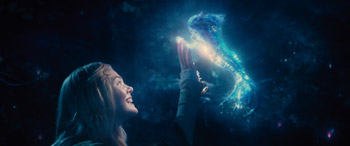 Recreating Maleficent's costume from animated film to live action fell to London-based costume designer Anna B. Sheppard, known for her work on 'Schindler's List" and 'The Pianist," both of which earned her Academy Award® nominations. The costume designer was tasked with creating two very different worlds, one with creatures living in a forest fairyland and the other a human kingdom. Anna Sheppard began her process with research that guided her from the 15th century to the Renaissance period of French and Italian art, including paintings, sketches and sculptures.
Recreating Maleficent's costume from animated film to live action fell to London-based costume designer Anna B. Sheppard, known for her work on 'Schindler's List" and 'The Pianist," both of which earned her Academy Award® nominations. The costume designer was tasked with creating two very different worlds, one with creatures living in a forest fairyland and the other a human kingdom. Anna Sheppard began her process with research that guided her from the 15th century to the Renaissance period of French and Italian art, including paintings, sketches and sculptures.
Maleficent's character look in the 1959 animated film was designed by animator Marc Davis, who is credited with creating Maleficent's horns and designing her elegant style complete with flowing capes and high collars, so Sheppard started with those references for Maleficent's specific style. After watching the classic 'Sleeping Beauty," Anna Sheppard incorporated the design elements and notes, 'The persona that comes to you straight from this film is Maleficent. The colors I used are similar to the Disney prints from that film. I think Maleficent looks exactly, in the big christening scene, as everyone expects her to be. This is Maleficent from the animated version, just more beautiful."
Although Anna Sheppard designed the line and shape of Maleficent's costumes, she says that she could not have achieved the fully realised look without the collaboration of specialty designers who were hired to work with Angelina Jolie to help create the character's style. 'Maleficent's costumes evolved from mossy colors and -floaty" fabrics to become dark and sculptural shapes in much heavier fabrics with lots of volume," explains Anna Sheppard. Artificial furs, leather and feathered accessories created by the specialty designers were used to form a much darker and sinister-looking character."
One of the first costume elements to be created were the horns and Maleficent's facial contours as those looks were intrinsic to creating Maleficent's full-on style. Seven-time Academy Award®–winning special makeup effects designer Rick Baker stepped in to handle the process. Rick Baker began immediately with a digital painting of what he thought Maleficent's look should be. 'Personally, I thought for Angelina Jolie, you didn't really want to do too much to her. For me, it was maybe horns and ears. I pretty much left her face alone," says Rick Baker.
But with Angelina Jolie's input, the design evolved. As Rick Baker explains, 'Angelina Jolie wanted to wear appliances for Maleficent's look, so I did a number of designs with appliances that were subtle. She also wanted a nose, which I actually thought could give her more of a Maleficent look. We ended up with numerous sets of cheeks and ears and horns in the beginning stages. First we made sketches and then later we actually sculpted on a cast of her head and made pieces for her to review."
Rick Baker created cheeks, a nose and ear appliances for Angelina Jolie that were silicone and gel-filled. Maleficent's cheeks look sharply prominent in the film, but the appliances are actually very small. Rick Baker explains, 'It's amazing because the appliances are less than a quarter of an inch at their thickest points and only about a half inch wide. They sit right at the crest of her cheekbones."
Special makeup effects artist Arjen Tuiten was on set daily to transfer Rick Baker's designs to Angelina Jolie. 'It was important to Rick [Baker] that all Angelina's prosthetics conform to the angles of her face," says Arjen Tuiten. 'From the life cast of her head, we formed the rubber cheekbones and ears, following those contours. The whole application process, including hair weaves, which took about a half-hour, was about four hours every morning. Angelina Jolie was very patient with the process."
Turning his attention to the horns, Rick Baker faced several challenges. 'The horns were one of the big issues because no one would want to walk around all day with big horns on his or her head," relates Rick Baker. 'So, I wanted to make them as lightweight as possible and removable because when you have something that sticks out a foot beyond your head and you're not used to it, you're apt to run into things."
Rick Baker and his team sculpted at least four different designs of horns. 'I did some drawings and modeled some of the designs for the horns on the computer," says Rick Baker. 'Then we actually ended up sculpting them. We chose the one that we liked the best and did all the work using that one design."
For comfort, the horns are very lightweight and thin, and made of urethane casting resin. 'After much experimentation, we ended up basically with a maxi-form skullcap that had on it the base of the horns and the first inch or so of the horns," explains Rick Baker. -The rest of the horns stuck on with a magnet. They were very strong magnets that held them in place but we could then pop them off in between shots."
The magnets also protected Angelina Jolie while engaged in wirework or performing stunts. 'If something crossed over or bumped they would disconnect easily," says Rick Baker. 'But because of that, we had to make many duplicates because if they fell, they would break. We also had a stunt version of the horns that were more rubbery, so that they would not hurt anybody. It was a lot of experimentation on how to keep them affixed to her head and how to make them seamlessly removable. Fortunately, the horns had a sculpted texture of lines, like a growth line basically, so that made really good connection points. We probably made at least 20 sets of horns of different types and replacements."
Maleficent's green skin in 'Sleeping Beauty" is nowhere to be seen in the live-action 'Maleficent." 'We still wanted her to look pretty and attractive," informs Rick Baker. That was an important thing and we didn't want her look to be too creature-like. Keeping it relatable seemed like the right thing to do for this film."
Rick Baker also had contact lenses made to complete the look of Angelina Jolie's Maleficent. 'Angelina Jolie designed them," says Rick Baker. 'The lenses were hand-painted by an artist who is an expert in that field. I have a lady that does them all the time for us and we had some pictures made of these eyes and had the eyes amped up a little bit."
After the horns were designed and built, milliner Justin Smith came on board to design the covering for the horns and all the headwear for Angelina Jolie's Maleficent. His first step was to get a sense of the costumes Anna Sheppard had created for the character and then apply his specific talents to bring innovative millinery to help create an iconic look based on the original character from the animated film. Explaining his approach, Justin Smith comments, 'I created several head wrap designs. The designs emerged from the story of Maleficent, who of course has horns. I worked on designing and creating looks that would capture the tension between menacing and magical to become a contemporary couture version of the 1950s animation."
To approach the basic design of the headpieces, Justin Smith conferred closely with the film's star Angelina Jolie. 'Angelina Jolie wanted something that was going to cover the head and completely lose all the hair, but also not be a turban or fabric just wrapped around the head. So it was quite a specific brief, and it took a little bit of time to understand where we can go with this to try and create an identity for her."
'There's python skin, some very fine leather and some fish skin, and it's all based on being quite clean and simple silhouettes with a wrapping technique that looks like it's just twisted and wrapped around the head in an easy way," concludes Justin Smith.
To create his designs Justin Smith looked to references that had already been established and then he expanded from there. 'There's obviously a theme that we had to build in and a lot of the fabrics were supplied already," says Justin Smith. 'So I delved in there and had a look at what I could actually use to bring it in with all the rest of the costume. I brought a lot of my own techniques and my own skills to do with how I've developed millinery in a modern way. A lot of my own references are artists like Michael Parkes, who is one of my favorites, especially his very elegant, very beautiful lithograph paintings. Then there are some rope-knotting books and various books that I use for my own work."
With these resources, Justin Smith manipulated his techniques and ideas together with the costume. 'I tried to come up with something hopefully quite new and a little bit edgy, a little bit futuristic but nothing too scary that would take away from anything else," explains Justin Smith. 'It's more about complementing the whole look to make everything work in harmony."
Using the story as a guide, with its numerous references to animals and the creatures of the forest kingdom, Justin Smith worked to bring some animalistic influences to Maleficent's look. 'It was the idea that the headpieces weren't structured at all, that they didn't have any stitching on them," explains the milliner. 'They look very manmade, with more taken from leathers and fabrics that would come from the forest. It's as though Maleficent wrapped them around her head. The idea was that they looked very easy and very natural."
Justin Smith created six different headpieces that corresponded with the seasons and specific scenes. Describing some of the different looks, Justin Smith informs, 'There's the summer look, which is a python skin head wrap. We've got the christening, which is the leather turban with leather-covered thorns. We've got a spring look, which is a narrow strip of leather sewn together so it creates a ribbed effect and then heavily lacquered and painted. Then there's the stingray head wrap. So it's stingray on the top and leather on the side."
No costume would be complete without footwear and accessories, so Rob Goodwin, a couture footwear designer, assumed the role of leather specialist. Rob Goodwin approached his task with a vision, as he explains, 'Maleficent is a dark and complex character so I was inspired by the darker edges of contemporary couture fashion which contrasted and complemented the approach and vision of the more established film costume design team. I wanted to inject an edgy, stylish and harder aesthetic component into the mix, which I think helped us create a new and iconic version of this fairytale anti-heroine. I worked closely with a small design team and with Angelina Jolie to pin down and reflect Maleficent's distinct personality in the garments she chose to wear."
Rob Goodwin admits that most of his inspiration came from Angelina Jolie. He comments, 'Most of the inspiration came from discussions with Angelina herself who inhabited the character completely. She is very knowledgeable about past and present visual culture and so we drew from our pooled knowledge and references to evolve Maleficent's appearance."
Rob Goodwin worked in leathers and combined them with feathers, beads and other materials. 'These materials have the quality of savage elegance, the scales and surface textures suggesting that Maleficent is somehow non-human," says Rob Goodwin.
Rob Goodwin's most challenging designs for the film involved the battles scene. 'From early on, I had an idea for a helmet and footwear for her battle scene, which had to be hard, formidable yet elegant. The helmet's sculpted shape is covered in leather that looks reptilian and this detail was continued onto the boots, which had customised bone-like heels. Together, these pieces were my most challenging as well as being my favorites."
Manuel Albarran joined the team to design Maleficent's accessories such as jewelry and collars, which accessorised the look. Says Manuel Albarran about his contributions, 'l was mainly designing the accessories for Maleficent: collars, rings, brooches, bracelets, shoulder-pieces and spines."
Manuel Albarran envisioned Maleficent's look as very organic and rooted in nature, with the use of as many natural materials as possible. 'As l am used to using metals and unusual materials in my creations, l looked to legends, history and architecture as initial inspiration for my designs. l then invented and developed the techniques needed to create my visions and to create the pieces in reality."
The materials Albarran used to create his designs included various metals, such as gold, brass and copper, precious stones and crystals, different leathers, feathers and other natural materials all in order to 'create costumes that would be beautiful, yet dark in character and powerful"like Maleficent herself," says the designer.
The collars Manuel Albarran designed for Maleficent were each different in structure and materials. 'The collars were all feminine and elegant in silhouette, yet powerful and dark in atmosphere," explains Manuel Albarran. 'Really organic. Some were very detailed structures. For example, l created collars where the collar, shoulders and spine were all connected as a single piece in leather with a support to form the base structure, where l then added various skins, feathers, etc. to create the final design."
Describing his favorite design, Manuel Albarran says, 'My favorite piece was a collar with feather shoulders attached to a delicate spine. I placed hand-dyed layers of duck feathers, the colors grading from different greys through dusty blues and greens, to the structure, which formed the shoulders and spine, creating a very organic feel. The spine l formed using a metal base, which l covered in leather. The silhouette of this piece is very elegant and feminine, yet also powerful."
Called upon to use his skills with leather in a different way, Manuel Albarran was assigned the challenging task of creating the full-body suit that Angelina Jolie wears in the final battle scene of the movie. Explains Manuel Albarran, 'Designing the costume was the initial step. Then l needed to bring the design to life. This involved many technical complications, as l had to ensure that she could move, jump and fight while wearing the costume. I needed to make different samples, in order to check the mobility, weight, and balance before the design could be perfected."
No look would be complete without beauty makeup and that's where Toni G, Angelina Jolie's personal makeup artist, came in. To begin the process of designing the makeup for Maleficent, Toni G looked to nature for inspiration. She explains, 'The story has so much nature involved with it that it definitely triggered more of a look into nature and the browns. With the palette we wanted a combination of colors that could be used in variation, such as Concrete, a grey brown, for more natural contour and a darker brown (Ground) and black (Carbon) to add a dramatic pop to the eye, with a little Goldmine for highlight that would complement the yellow in her contacts."
As red lips were part of the classic Maleficent design, it was an important element to retain in the character's live-action look. 'We tried so many reds; we wanted a true bright red, but it also needed to be the right constancy and be fully pigmented with a dash of shine. I love the color we ultimately picked, so dramatic!"
After special makeup effects artist Arjen Tuiten applied the prosthetics and did a light fine painting to match the skin, Toni G would begin her work. 'We would start in with the beauty and basically highlight the upside down triangle under the eyes to the outside part of the cheeks to the bottom of the nose. Basically the same principle with a normal beauty makeup."
Toni G's approach to the makeup for the Maleficent character was 'about finding a way to bring the animation to the flesh." She elaborates, 'Besides her prosthetics, her eyes where the perfect way to achieve this. I was very inspired by the labradorite stone. The Eskimos call it the Aurora because of the dimensional shift in color as the light hits it. Beautiful greens, blues and yellows. She wore very detailed contact lenses painted with these colors. The perfect way to help her feel magical."
Working with the contacts and the eye makeup was a balancing act for Toni G. 'Those contacts just made her eyes pop that much more, so had we gone with strong colors on her eyes, we would have lost the balance," states the makeup artist. 'Her contacts were supposed to be part of who she was as her own natural face. We wanted to keep a sense of her being relatable and natural, but also a strong sense of the classic Maleficent. We wanted to find what worked for this story and also make sure that it wouldn't become overly distracting as a theatrical makeup."
Maleficent's nails also had a special look. They were painted underneath with black and on top with a pearlescent-like polish, but for the christening scene, the nails underneath were painted blood red.
Although Toni G enjoyed the transformation that took Angelina Jolie from her movie-star self to the evil Maleficent, she was concerned about the use of glue to apply the prosthetics. 'It was exciting for Angelina Jolie to have prosthetics and such a cool transformation, yet I was concerned for her skin having pieces glued on for four months! But it was all good. We opted to use a mix of coconut and argan oil for removal, which seemed to really help keep her skin from being irritated by strong glue removers."
But Toni G admits that the most challenging aspect of designing the beauty makeup was finding the balance. She explains, 'It was just always about finding the balance of everything. When we got a new costume on, we had to decide what we wanted to do with her eyes and had to think about the emotion of the scene. It always seemed to be about finding the balance between her costume and where she was in the film."
Costuming the Cast
Taking on the task of costuming the rest of the cast, Anna Sheppard faced the challenge of creating costumes for a hybrid reality, bleeding the borders of the fairy-tale world and the world of medieval humans. 'My first impression was that I would have to base my costumes on a particular period of time," explains Rob Sheppard. 'But it quickly became clear to me that I should forget that and let my fantasy run with Rob Sheppard's visions because he's incredibly visual and can describe things very well. So I knew I was going to have to cross the line and go into fairyland in a big way."
But in addition to alternating her designs between fairy and human worlds, there were numerous categories within those worlds that had to be created. Overall, she and her team created more than 2000 costumes by hand.
'My biggest worries were the two armies because I have to admit, I'm better with civilian costumes than with creating medieval armies," says Rob Sheppard. 'I took quite a big risk because I decided to do King Henry's army in yellow"sort of a mustardy yellow"with red trimmings. I was a bit bored with every army being in brown; I just imagined this army in the green forests wearing yellow. And when the first example of my armor arrived, it took my breath away."
Sheppard would create 300 of these uniforms and another 300 human costumes for courtiers, servants, royal visitors to the christening and others, including 35 blacksmiths who forge armor for the castle walls. Sharlto Copley's Stefan alone had 17 costume changes.
Commenting on Stefan's multiple outfits, Sheppard says, 'His story in the film creates that line, because he starts as a human boy in a peasant costume. Then, he goes to the court of King Henry, becomes a servant and is given some clothes by the king. Then, of course, he grows in the ranks and he creates his own kingdom, in which he changes everything. My idea was to create two different courts, one in reds and golds and warm colors, yellows and very picturesque colors for King Henry and Stefan's court is in cold colors, in blues and blacks and grays and dark greens and dark purples. It's a completely different world he created for himself. So Sharlto ended up with more costumes than Maleficent and Aurora together."
Sheppard kept Elle Fanning's costumes for Aurora very simple to fit with the nature of the character. 'Elle Fanning's costumes are very simple because she plays this very innocent, beautiful character. She is very beautiful, and I didn't want the costume to overwhelm who she is in the movie. I didn't want the costumes to be too complicated. We just needed a beautiful shape and beautiful color that suits her."
Besides designing the costumes to fit Aurora' demeanor and personality, Sheppard built in a subtle pattern of color to link Aurora with her mother Queen Leila. 'All my costumes one way or another are linked to the past. I'm using the same colors on Aurora as for her mother. So when we see her mother the first time, she's in a beautiful pale yellow dress. When we see grown-up Aurora, she's in a yellow dress."
The costume designer adds, 'I realised that the most important dress, which we will really see for a long time, is the dress in which she falls asleep. I followed the same coloring I used for her mother in the christening, which is blue. So when Stefan meets her after 16 years, she looks like her mother, in color."
Finding a look for Diaval was an interesting challenge for Sheppard. 'I based Diaval on a rock star and I thought he would be wearing black. Sam Riley is very handsome, so I just put him in a pair of leather trousers and boots and a big duster coat"a very raggedy duster coat. Later, in our discussions with Rob Stromberg, he said that the clothes would come from the scarecrow in the scene. So I said, -Oh well, there will be a very fashionable scarecrow because he will be wearing black.'"
For an actor, a costume can help define a character. Pixie Juno Temple's costume brought out the brightness and fun in her character, Thistlewit. 'I love my costume," says Juno Temple. 'It's extraordinary"like a big green corset. I'm very green because I'm the green fairy. It's a tight corset that laces all the way up the back with this beautiful long dress that's mustard yellow that goes tie-dye green at the bottom. I have yellow stockings and green shoes. Then I have this beautiful pouch that's green leather and then I have all these over-layers for when I'm outside. I have this incredible dandelion- like hair and I wear these bright green contact lenses."
While the wardrobe helped the actors define their characters, the stars were busy developing their characters in other ways by studying accents and movements. 'The filmmakers had the idea that all of the fairyland creatures would be of Celtic origin," explains Sam Riley. 'The Irish or Scottish accent helps add a certain playfulness to things. So I studied with a dialect coach and they had a couple of terrific coaches on set to help us all along.
'I also met with movement experts in Berlin, where I live, and in London who helped me study the movements of ravens. Those were some of the most embarrassing hours I think I've ever spent preparing for a film"running round a huge room flapping my arms around making cawing noises. But once you get through that and nobody's watching, then you're a lot less ashamed to do strange things in front of 150 people."
Behind-The-Scenes Magic
'Maleficent" began production on June 11, 2012, at England's famed Pinewood Studios where most of the filming took place. It took five months of shooting on six sound stages and thousands of yards of back lot and paddock area to complete principal photography.
The production had a number of extraordinary physical sets. Production designers Gary Freeman and Dylan Cole, along with set decorator Lee Sandales, worked with Stromberg to create interior and exterior backdrops worthy of epic filmmaking. 'We built a lot of sets," says Gary Freeman. 'About 40 sets, from a 12-foot square room to the 5,000 square foot Great Hall. They're quite complicated sets, architecturally and technically. It is the whole gamut of design from picturesque northern European landscapes to stark examples of castles, to quintessential fairytale cottages."
Director Robert Stromberg, whose visual artistry as a production designer is world acclaimed, turned over his vision for 'Maleficent" to his production design team, who were tasked with bringing the worlds to life. Describing Robert Stromberg's mandate, Garry Freeman says, 'Robert Stromberg was quite specific in his wants. He wanted to create this world that's familiar but has a fantastic element, so you're not detached from it. You feel like you've seen it all before, whether it's in a storybook or a walk in a beautiful forest glade. But there's something magical and different about it. That stems into the architecture as well. We've all visited castles and been enchanted by them, but again we wanted to take it to another level."
Speaking to the differences between the two worlds from a design perspective, Garry Freeman relates, 'In the human world, we have this hulking castle, which is a very strong silhouette. It doesn't blend in with the environment; it becomes a statement. Whereas in the fairy world, the creatures evolve from the trees and they're very much in tune with themselves and the environment as opposed to the castle with its very strong statement contrasting with the environment that surrounds it."
King Henry's castle was a similar physical realisation, both interior and exterior, of the castle in the 1959 animated film. 'The original animation is a fabulous piece of design," says Garry Freeman. 'It was very avant-garde when it came out. The artist really had an extraordinary approach to color and the conflicts of color. You look at each item individually and you think, -that shouldn't work' but when it's all brought together, it does."
Architecturally, the castle in the animated film was a collective of elements from every type of period castle but that type of design did not transcend to live action as well. Garry Freeman explains, 'We can't really do that, because the modern audience can't walk through a sort of Victorian/Gothic/Romanesque castle, because it just doesn't make sense. So we had to zone in on one look and we did. It was also a hybrid but a more logical one: Prague-style architecture with strong Romanesque shapes. Then we took the idea of the flying buttress and it became a sort of theme that linked all the spaces together."
Continuing, Garry Freeman adds, 'We took a lot of references from St. Michael's Mount; strong shapes with a subtle relief to it. There was a great influence from the Disney castle itself, because it's a very strong silhouette. That was a big influence in it, but we refined the detail, so it was less fairy-tale looking. You can understand it architecturally and it makes sense. Besides the scale, we used more luxurious materials than you tend to see in typical Norman castles. We went with marble floors, for example, so it's a very rich, strong palette."
The castle's Great Hall, where Aurora's christening takes place, is an eye-popping example of British craftsmanship accented by authentic antiquities and also modeled from the designs of the animated original. The grand design prompted the film's Oscar®-winning cinematographer Dean Semler to exclaim, 'This is possibly the most impressive set I've ever seen." The Great Hall took 14 weeks to build, employing some 250 construction workers and an art department of about 20 people.
As well as the human kingdom, Garry Freeman and Dylan Cole built a large fairy kingdom on the back lot at Pinewood, which encompassed a waterfall, a river valley, a beautiful, lush flower meadow and a waterway, which links to the fairy mound, a key part of the movie.
But it didn't stop there. Explains Garry Freeman, 'We created, on stage, another version of our fairytale world that could be lit as a night scene. Everything has been built. Obviously for the smaller greens we bring in flowers and bushes to scale. But the trees are based on ancient oaks that we researched that are 800-year-olds. We wanted to give it an Arthur Rackham look. A sense of curve and movement but to your eye you would look at it and think that it is a real tree, except it's made from plaster and foam."
Aurora's world was another environment the designers had to build, consisting of a real thatched-roof cottage in a non-magical forest. 'Aurora's forest is adjacent to where she lives in the cottage," informs Garry Freeman. 'These trees are more naturalistic; they're not as twisted as in the fairy forest. But they have a great scale and a look to them. We changed the color palette. We used pinks and blues in the fairy forest and we went for warmer yellows and orange in Aurora's forest, so there's a line of difference, but quite a subtle line."
The thatched cottage that became Aurora's childhood home was built from the ground up on the back lot of Pinewood Studios. The cottage features a timber frame and an authentic thatched roof that was hand-done by traditional thatchers.
The efforts of the production design team on 'Maleficent" were not lost on the actors, especially Sam Riley, who experienced working in a studio environment for the first time. 'The soundstage sets are impressive and the outside sets even have waterfalls running through what look like real rocks," enthuses Sam Riley. 'There's even a real cottage with a thatched roof. It's really insane, the talent and the work effort that goes into it. It's really mind boggling to work in a studio, which I've never done, and see how so many departments manage to all congregate and actually make something happen.
'It's not like we're standing in a studio with a blue floor and a blue wall. There are very tangible things. There are things you can touch. There are things that really help you feel that you are somewhere magical. It still fascinates me every time I come into work," concludes Sam Riley.
Visual Effects
'Maleficent" has huge scale and scope with expansive vistas across both the human and fairy worlds"plus fantastical creatures and magical transformations. It is a story that could not have been told without visual effects. Carey Villegas, who has worked with Robert Stromberg over the last 15 years on many films, joined the production team as senior visual effects supervisor. 'The last film I did with Robert was -Alice in Wonderland' and everything that we created was pretty much created in post where Rob would design things on the computer and give us renditions of what those things should look like," says Carey Villegas. 'On -Maleficent,' we're doing a lot more set builds, a lot more real things. It definitely has a different feel, more realism, grittier. It's a fanciful film, but it also has a very realistic quality to it."
Making a movie where much of the background and many of the characters exist only in the imagination is a challenge on many levels. 'Acting against a blue screen background is a special challenge but we have such a talented cast that they make you forget there's not actually a fairy world around them," says Robert Stromberg. 'We've gotten amazing performances from actors who have to imagine the world they're in"and even the size of the bodies they're inhabiting."
Continuing, Robert Stromberg adds, 'The Pixies are a good example. For part of the movie, they are actually just two-and-a-half feet tall and they fly around. But we have these wonderful actresses bringing their humor and personalities to the roles and I can be sitting there watching them perform and completely forget they're saying their lines dangling at the end of a wire, wearing outfits that look like space suits with all these painted dots on their faces."
For Carey Villegas and his team, creating those pixie characters was one of the biggest challenges on the film. 'We have these brilliant actresses who are playing those characters and we want to make sure that every nuance of their performance comes out in their character because the characters are 21 inches tall and they're very quick, like bumble bees; they're able to move very quickly and bounce around very abruptly. So we knew that we were going to need to create them entirely as computer-generated characters."
Carey Villegas and his team used performance capture for the three Pixies (Imelda Staunton, Lesley Manville, Juno Temple) when they were in their original 21" tall size in order to capture all the talented actresses' subtleties. The visual effects team used 150 markers on each of their faces to track their facial expressions into computer-generated characters. These fun characters were slightly caricatured in their 21" size, with larger heads, bigger eyes and their natural figures exaggerated.
Another technical and creative challenge for the visual effects team was Maleficent's wings. 'Maleficent is a fairy with wings and because she has wings, she's able to fly and her wings are almost a character of their own. They have a mind of their own, a life of their own. They're always supposed to have movement to them and because of that we made a decision early on to create wings entirely in the computer. It's one of those things that if technically we don't achieve the right look, you're not going to buy that character right off the bat. So it was key for us to make that as seamless as possible."
Luckily, Carey Villegas had something tangible to work from as prosthetics makeup designer David White and his team actually built a full-size set of wings for Maleficent. 'One of the best things that we can do in visual effects is actually have real photographic reference or something tangible that we can actually hold and feel what the texture and quality of it is and then take it out into real lighting conditions to see how the sun reflects on it and see how it casts shadow," explains Carey Villegas. 'Any time we can build something by hand, even though we won't necessarily photograph it in the film, it just gives the computer-generated version of that object so much more realism and detail."
The shape-changing Diaval was also a challenge for Carey Villegas and his VFX team. Originally just a raven in the animated film, Maleficent can now transform Diaval into any animal she wishes, including a human. 'Those transformations made creating this character very difficult for us, especially because you see different transformations throughout the film. You want every one of those transformations to not be exactly be the same, so what we tried to do is have whatever's happening in that scene, his body motion or the body of the raven as it's flying through the shot, help motivate some of this transformation."
Adding another level of difficulty, Carey Villegas decided to incorporate birdlike elements into the Diaval character when he transformed. 'We tried to incorporate the feathers in some way in each of the forms that he took," informs Carey Villegas. 'For the wolf, we obviously took the feet of the raven and transferred those onto the wolf. But the feet of the raven are so delicate that it was quite a challenge to make these delicate structures fit into a creature as large as the wolf."
Bringing all the fairy creatures that inhabited Maleficent's fairy kingdom to life also fell to Carey Villegas' team. 'The process of creating all of the characters in the film, from the pixies to the moorland fairy creatures, was very much an ongoing process. You're never finalising a character until you're putting the final touch in that particular shot. We're very much involved because we have to create every facet of those creatures, like how their hair responds to gravity or to wind and just every little nuance of what their skin looks like or fur or the clothing that they may be wearing."
The process begins with deliberating over sketches to decide on the style or design of the character and what the filmmakers want that character to convey. The next step is to see the character in motion and fully realised and dimensional by putting the artistic rendering into a computer program especially designed to turn it into a 3D model.
Carey Villegas' team of VFX designers also created the massive Thorn Wall that Maleficent employs to protect the fairy world. Describing the wall, Carey Villegas says, 'It's basically like the Great Wall of China, but it has that type of scale to it like the beanstalk from Jack and the Beanstalk. It's very organic, and we see it grow onscreen. The Thorn Wall also is involved in a battle where many soldiers are trying to burn it down and it's very much a character in those scenes. We had to have organic qualities to it but also still have some qualities that would allow it to actually do things that hands would do or arms would do by picking up soldiers and throwing them."
'Well, Well..."
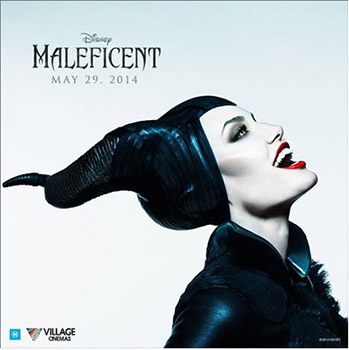 When moviegoers sit in their seats to watch 'Maleficent," Angelina Jolie expects that they will have a great experience. 'Everybody involved is hoping to bring audiences the feeling that we've respected the classic film and if they loved the classic, we've tried to bring them what they've remembered and loved about this story," says Angelina Jolie. 'But we've tried to enhance it and also make it beautiful and touching.
When moviegoers sit in their seats to watch 'Maleficent," Angelina Jolie expects that they will have a great experience. 'Everybody involved is hoping to bring audiences the feeling that we've respected the classic film and if they loved the classic, we've tried to bring them what they've remembered and loved about this story," says Angelina Jolie. 'But we've tried to enhance it and also make it beautiful and touching.
'We hope that audiences care about the characters, Aurora and Maleficent and Stefan and everybody involved; whether they love them or hate them at moments, that somehow they deeply know them and they're deep, good characters. But we also hope to bring a real world that they've never seen before and also action sequences and everything audiences want in a film," concludes Angelina Jolie.
Producer Joe Roth notes, 'A Disney film has to have great entertainment value, has to offer something fresh and also has to offer something underneath all of it that you can take away. It's always about what kind of clothing you put on it. So, the big, visual set pieces are fresh. And what they'll take away here is no matter how badly you feel about yourself, or how fractured your life might be, here's someone who's heart has truly turned to stone but has learned to love despite herself."
Elle Fanning is excited for audiences to experience the film and says, 'There's something for everyone in a way, for boys, and girls, and adults as well. The movie has so many different emotions wrapped up into it, that when you come out of the theater you will be both laughing and crying. Also, it's going to look amazing because Robert Stromberg creates the most magnificent sets."
Maleficent
Release Date: May 29th, 2014
Have You Seen This?
MORE
- Mission: Impossible Fallout
- Glenn Close The Wife
- Allison Chhorn Stanley's Mouth Interview
- Benicio Del Toro Sicario: Day of the Soldado
- Dame Judi Dench Tea With The Dames
- Sandra Bullock Ocean's 8
- Chris Pratt Jurassic World: Fallen Kingdom
- Claudia Sangiorgi Dalimore and Michelle Grace...
- Rachel McAdams Disobedience Interview
- Sebastián Lelio and Alessandro Nivola...
- Perri Cummings Trench Interview

